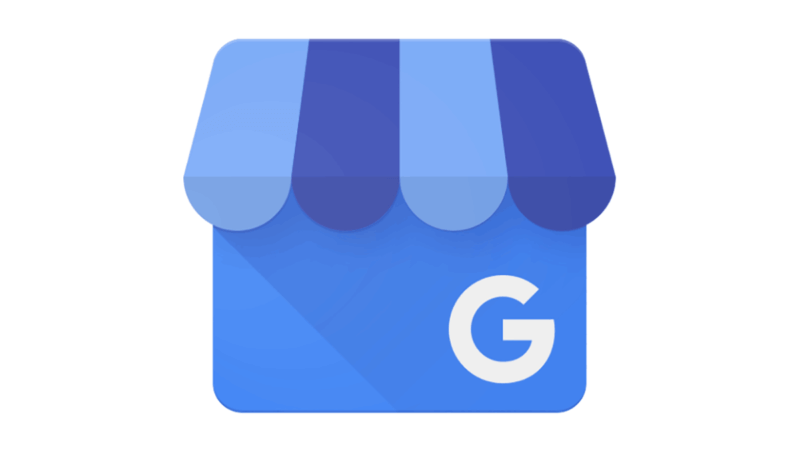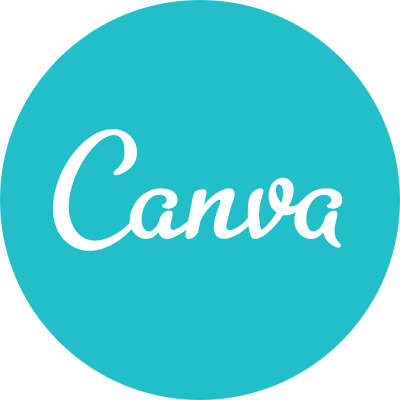How I Started A Bakery Business In Brooklyn During Peak Covid That Now Makes $30K In Annual Revenue
Hello! Who are you and what business did you start?
Hi! My name is Gaza, the founder a lead baker of Moco Choco! Moco Choco is a private bakery in Brooklyn, NY that specializes in custom cakes, cookies, and chocolates. I started Moco Choco at the beginning of 2020.
Yes, I know, worst timing ever. But after years of a hard, uphill slog, I’ve gotten to experience the euphoria of my business not only making money but of my dream to be a chocolatier and baker in New York City coming true!
At Moco Choco, we’re known mostly for our custom cakes though we do also make customizable cookies and chocolates. I wanted to give Brooklyn high-quality cakes, but with an eye for colorful design and craftsmanship that they wouldn’t find at the normal local bakeries that dot the street corners.
Fast forward a couple of years, and I’ve baked hundreds of cakes, each one uniquely custom, for everything from weddings to citizenship parties, and have managed to reach more than $30,000 in annual revenue.

What's your backstory and how did you come up with the idea?
My entrepreneurial dreams go back to my roots in my home country of Yemen. I was born in a small coastal town but had to flee my homeland in the early 2010s as my country descended into civil war. In America, I had to relearn how to live in a new culture, a new language, and with no family around me. The loneliness was sometimes more than I could bear, but I knew giving up was not an option.
Yemeni people are strong, we’ve always had to be. And one thing we’re known for is an entrepreneurial spirit. If you visit New York City, almost every corner store you see in the city is owned by Yemeni immigrant families. These families all started with nothing but worked hard to make a living and provide for their families. I wanted to be no different.
As I started to brainstorm what I was going to do to make my living and harness my Yemeni entrepreneurial spirit, I saw an advertisement for the Chocolate Expo in Long Island, NY.
If you’ve already started — you’re amazing! If you haven’t — take the first step.
My sweet tooth and curiosity got the best of me, and I attended. At the expo, I not only saw an amazing display of chocolate and sweets, I saw people using their creative talents to make a living off of their love for chocolate.
One thing that especially caught my eye was the use of Print-On Chocolate. Print-On Chocolate uses special machinery that allows one to print edible pictures onto chocolate bars, cookies, and cakes.
I was fascinated by the idea, and quickly realized no one was doing it in my neighborhood. I did more research on the process of printing chocolate, and how it could be incorporated into bakery products, bought the machinery, and started learning it.
Take us through the process of building the first version of your product.
To print on the chocolate you essentially first print on something called a transfer sheet that runs through a normal printer. A transfer sheet kind of looks like wax paper, but when printed on, holds the image very lightly.
The transfer sheet is then pressed onto melted chocolate that sits on a mold. Once the chocolate cools and hardens, you can peel back the transfer sheet to find that the image stuck to the chocolate instead of the sheet.

So once I had bought the machinery and a closet full of the ingredients necessarily (mostly chocolate chips of various flavors that could be melted down, along with molds, and cake ingredients), all of which cost me less than $2000 to start, I began practicing and practicing and — you guessed it — practicing.

The first results weren’t pretty. Sometimes I’d skew designs and people’s photos would come out wonky or deformed. But I kept honing my skills until my confidence grew and I felt like I could start offering my product to others.
I did some work for free t first. I’d show up to a friend's birthday and surprise them with a cake that had their photo on it. Or I’d print a company’s logo on some cookies and drop them off one day by surprise. This method allowed me to both practice with less pressure as well as increased awareness and word of mouth, and soon enough orders started coming in.
Describe the process of launching the business.
I rolled into March 2020 confident in my product and ready to launch my business officially. And I did! But as you know, March 2020 was a terrible year to start a business — especially in NYC — as COVID struck and brought the city to a screeching halt.
However, the Yemeni entrepreneurial spirit wouldn’t die in me, and I resolved to make the most out of the hard season and continue to learn and grow. I enrolled in a free entrepreneurial course that was being offered by a local church whose pastor was an entrepreneur as well. This course allowed me to learn more about marketing as well as how to calculate profit margins and legally set up a business the right way.
So while COVID wasn’t the most sales-heavy time, it did allow me a chance to grow, learn, and structure my business in the way it needed to be. So I opened up a business banking account, went through the process of forming an LLC, and all the while make cakes for friends and the few orders that started coming in.
Since launch, what has worked to attract and retain customers?

Once I made it through COVID, business really bepick up again. By this time word about my business had spread, especially in the local Yemeni community in Brooklyn, and I also began setting up booths at local community events like street fairs and heritage days with free samples of my chocolate.
I began posting every cake I made on Instagram and had my website built by some local webdesigners in Brooklyn and good friends — DKDesigns. They understood the local market and competition well and were able to get me competitive in search engine rankings.
Today, most of my marketing efforts happen in these three channels: Social Media, Organic search engine traffic to my website, and word of mouth. And most of these happen in conjunction with one another, not necessarily on the islands themselves.
For instance, if I’ve made a cake for someone’s birthday, 99% of the time I’m going to put the finished product on an IG story on the day of that person’s birthday and tag it in them. Those stories almost always get reshared on that person's account, and essentially have them talking about my cake both in person at their party as well as online via their social media platforms.
I’ve also learned a lot about just asking people to share my product online if they enjoyed it. I recently made a cake congratulating a local actor, he put it on his Instagram, tagged me, and I got thousands of followers within the hour — all organically.
The biggest thing I’ve learned in attracting and retaining customers since launch is that it is all about relationships. Treating every client like they’re you’re own cousin, sister, or brother goes a long way. Don’t just bake their cake, send it off and forget about it. Follow up with a text, wish them a happy birthday, and then a couple of days later ask for reviews, referrals, or a simple shout-out on social media.

Most people, if they enjoyed the work you did for them, are all too happy to oblige to this kind of request. Having your web presence and social media channels is helpful, but happy customers can be even more helpful when it comes down to it!
How are you doing today and what does the future look like?
Today, I’m happy to say that Moco Choco is profitable, however, it hasn’t been easy. The recent financial crises, inflation, and the rise in the cost of goods like eggs and flour have made the bakery business more costly than it once was. But even though I’ve had to raise my prices multiple times, customers have continued coming.
The price of my cakes ranges from $70 at the cheapest, to $650 for multi-leveled wedding cakes. Once the cost of ingredients and delivery is offset, I usually gross around 60-80% of that amount. There are a few things that have helped me increase my profit margins.
The first is NOT having a brick-and-mortar location. While this would be great one day, I’ve operated up until now as a purely private, online bake shop. This has allowed me to avoid the exorbitant cost of leasing a space in Brooklyn — though it is a sacrifice not being able to rely on foot traffic for exposure.
The other thing I’ve learned that is affecting how I do business going forward is that I can’t offer just cakes. Even though cakes are my most popular and most expensive sellers, I’ve learned that offering add-ons that go great with cake-based parties like cake pops, custom chocolates, or custom cookies can increase the profit margin of a single sale exponentially.
So I guess the lesson here is don’t put all your eggs in one basket. Learn what other needs people encountering our product have and meet those too!
Through starting the business, have you learned anything particularly helpful or advantageous?
Friends. Family. Strangers. PEOPLE! I’ve learned that as entrepreneurs we can often just become obsessed with our product and tools and often forget the soft skills that are needed to market and expand a business. It’s not always that you have to know the right people. But you do need to meet and talk to people and tell them what you’re doing for others to discover your business and get involved.
I tell everyone that I make custom cakes. I tell them about my social media handles, and my website, and they almost always have someone's birthday on the horizon they need a cake. This gives me an excuse to show them what I do. Sometimes they go through and buy a cake, other times they’re simply entertained to see some pretty amazing cakes.
And finally, I’ve learned half the battle is just starting. There is so much insecurity and vulnerability in starting a business, and we give ourselves a thousand reasons why we might fail. But we forget there are also plenty of reasons as to why we might succeed, and so we must start to ask, ‘Why not me?’.
What platform/tools do you use for your business?
I’ve had to rely on a lot of tools off and on, here are a few of my most useful ones:
- Instagram - this has been invaluable for quickly and succinctly displaying my work.
- QuickBooks - has been my go-to tool for keeping my finances in line, accounted for, and ready for tax season.
- Cloudways - is what I opted for hosting my website. And even though the site is managed by my web designers, I made sure they used that platform because it's fast, reliable, and can scale if I have an uptick in customers.
- GoogleAds - has been useful for running ad campaigns and targeting my specific area of the market geographically.
What have been the most influential books, podcasts, or other resources?
The business class I took in 2020 was instrumental in giving me some fundamental knowledge needed to run my business. But in addition to that, some things I read and listen to for encouragement and inspiration are Good to Great by Jim Collins as well as How I Built This on NPR.
Advice for other entrepreneurs who want to get started or are just starting out?
If you’ve already started — you’re amazing! If you haven’t — take the first step. You don’t have to act rashly or foolishly, and that first step to your own business might still involve you hanging onto other streams of income, but that’s ok! But any step towards a business will feel a degree of risk, and that’s normal and necessary for you to grow both yourself and your business.
I see so many people often looking for more training, credentials, and affirmation that their idea will work. I simply say this: stop looking for more training and validation. If there’s one person who will buy your product, there are others. It’s just about finding them.
Where can we go to learn more?
If you have any questions or comments, drop a comment below!

Download the report and join our email newsletter packed with business ideas and money-making opportunities, backed by real-life case studies.

Download the report and join our email newsletter packed with business ideas and money-making opportunities, backed by real-life case studies.

Download the report and join our email newsletter packed with business ideas and money-making opportunities, backed by real-life case studies.

Download the report and join our email newsletter packed with business ideas and money-making opportunities, backed by real-life case studies.

Download the report and join our email newsletter packed with business ideas and money-making opportunities, backed by real-life case studies.

Download the report and join our email newsletter packed with business ideas and money-making opportunities, backed by real-life case studies.

Download the report and join our email newsletter packed with business ideas and money-making opportunities, backed by real-life case studies.

Download the report and join our email newsletter packed with business ideas and money-making opportunities, backed by real-life case studies.



















